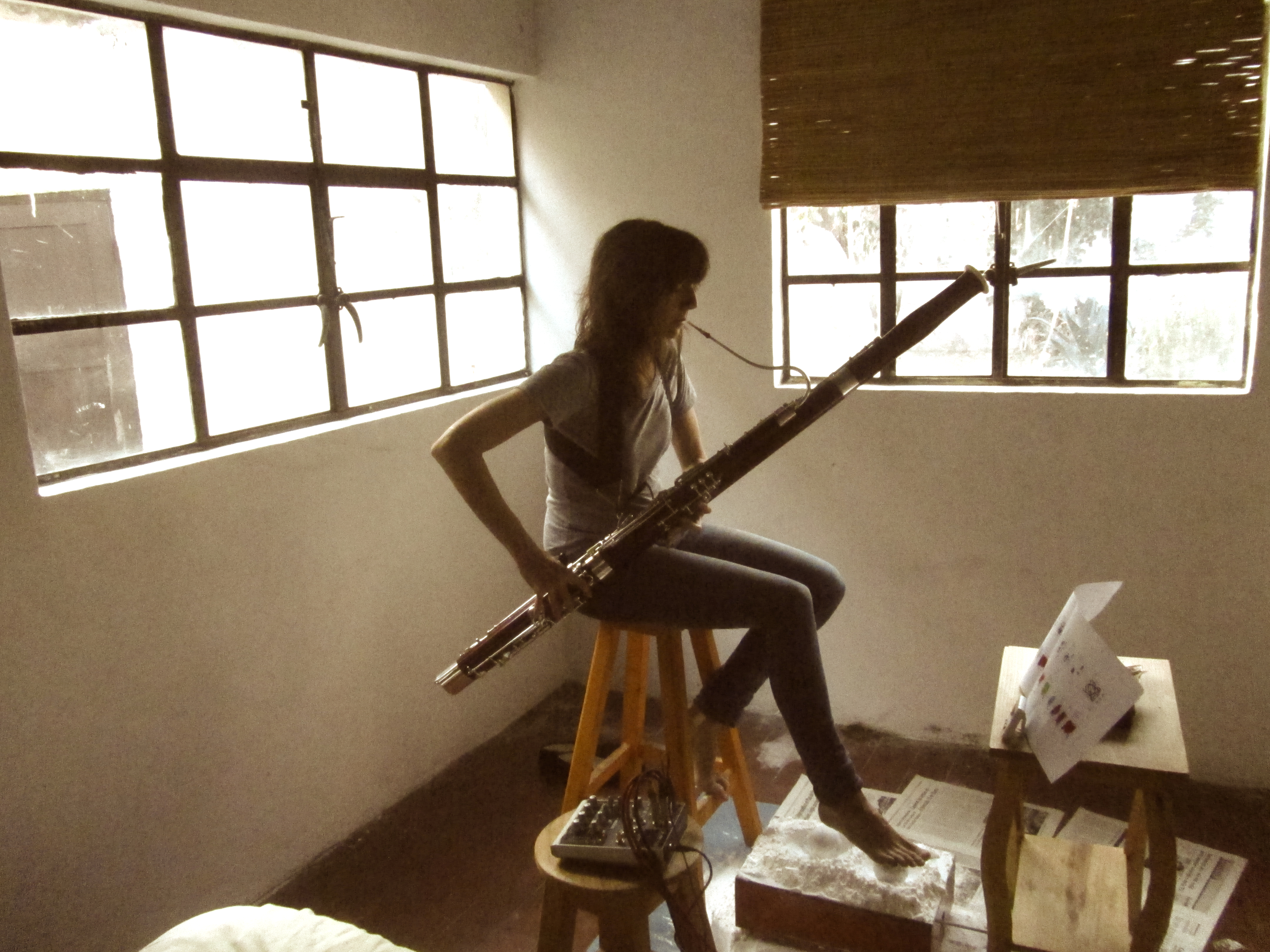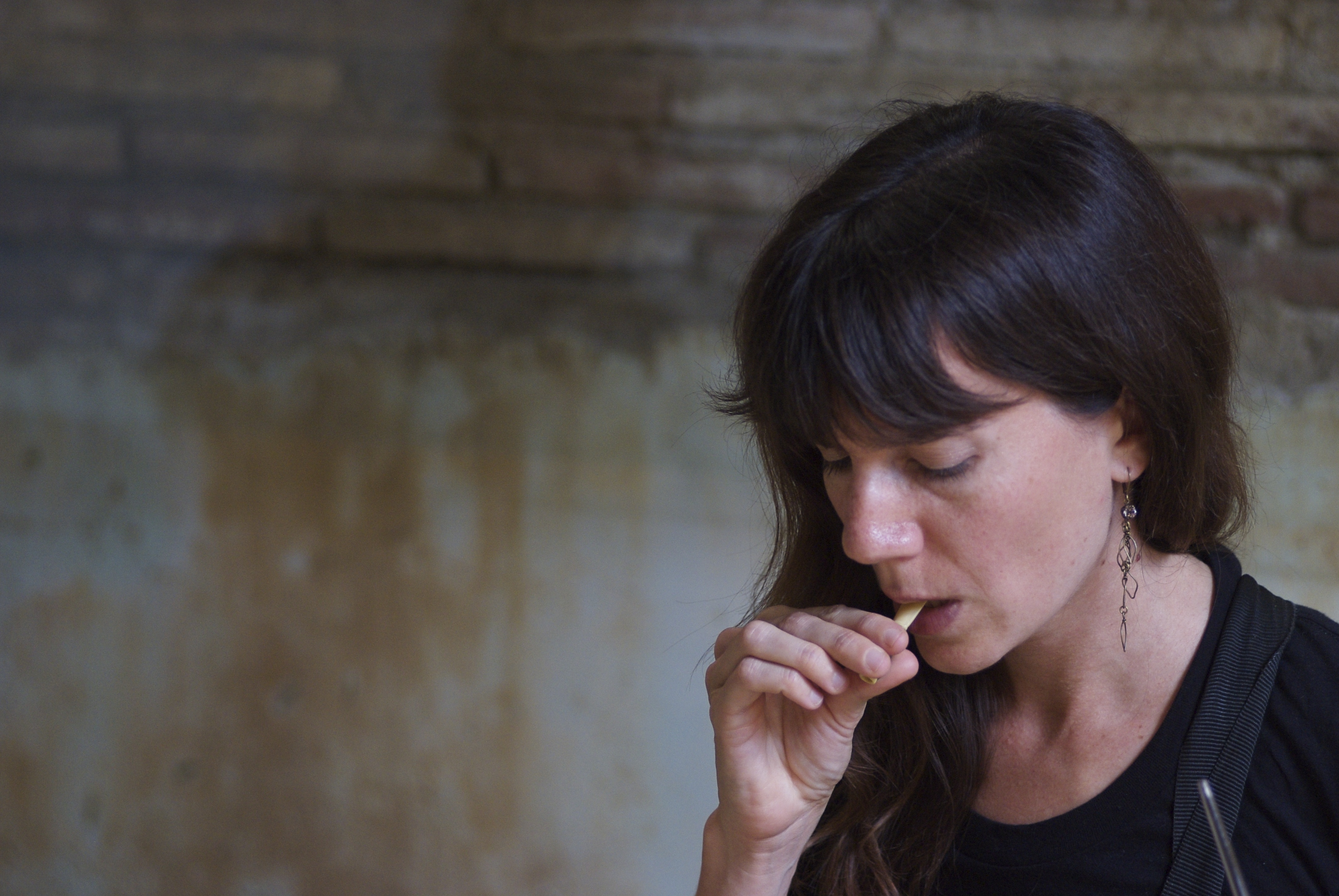The title of the concert -For bassoon - should be taken literally: the two pieces on the program explore acoustic phenomena specific to the making of this instrument - its specific vibratory mode, the complex behavior of its harmonics, the pronounced frequency peaks, or formants, that characterize its spectral envelope.
But it will also be heard even more literally, not to say etymologically: for low sound(s). What these compositions have in common is that they deploy volatile sound architectures rooted in the bassoon's two lowest notes - respectively B-flat for Occam XIII and B-barre for astrum, trigonum, speculum.
Beyond that, we might venture to say that this concert is more for bassoon than for bassoonist. The material fashioned here is fragile, versatile; the instrumentalist strives to shape it, but his playing is shaped in turn by the response of his instrument. The result is an agile dialogue between bassoon and bassoonist; the musical line that emerges is one of many possible outlines.
In this openness to variability, the interpretation of the composition also becomes an interpretation of the circumstances of the performance. The multiple that constitutes each given moment is made audible. Not only does it accidentally affect the sound produced, but the latter becomes the expression of its temporary unification. By multiple, we mean the particular resonance of a certain room, the degree of resistance of the reed, the activity outside the city, or you, the listener, and the way your presence objectively and subjectively informs this acoustic situation.
Partnership
Théâtre Joliette-Minoterie
Coproduction
GMEM
For astrum, trigonum, speculum:
Music commission
GMEM
Dafne Vicente-Sandoval
bassoonist
Born in Paris in 1979, Dafne is a bassoonist who explores sound through the interpretation of contemporary music, improvisation and the creation of sound installations.
Her instrumental practice revolves around the fragility of sound and its emergence within a given space. In concert situations, this research often places her on the dividing line between control and instability.
Dafne is committed to long-term collaborations, through which her work is enriched by contact with other artists while retaining its integrity. In recent years, she has worked with composers Jakob Ullmann, Éliane Radigue, Klaus Lang and Peter Ablinger, as well as improvisers Pascal Battus and Klaus Filip.
Her work is regularly presented at contemporary music festivals (Huddersfield Contemporary Music Festival, England; Musikprotokoll, Graz, Austria; Blurred Edges, Hamburg, Germany; El Nicho, Mexico; Tectonics, Glasgow, UK), as well as experimental music festivals (No Idea, USA; Konfrontationen, Austria) and sound art festivals (Tsonami, Chile).
Eliane Radigue
composer
French composer Eliane Radigue, born in Paris on January 24, 1932, is the author of a singular body of work, without equal in the French musical landscape.
She was born and raised in Paris, then married painter Arman in Nice, with whom she had three children. She rubbed shoulders with the entire Nice group and other artists such as Ben, Robert Filliou and Yves Klein. She studied piano and harp, and tried her hand at composition at an early age. Her work began in the '50s, when she first heard a radio program devoted to Pierre Schaeffer, the initiator of musique concrète. She met him shortly afterwards, at a conference devoted to Gurdjieff. He invited her to the Studio d'essai, and she became one of his students, working in the studio during stays in Paris.
At the end of the '50s, she stopped attending the Studio d'essai and devoted herself to lecturing on musique concrète. Éliane Radigue and Arman lived in Nice until they separated at the end of 1967. She then moved to Paris and resumed composing while working as Pierre Henry's assistant. She took part in the creation of the piece "L'Apocalypse de Jean". While at the Studio d'essai, she had already done some editing for the piece "L'occident est bleu". It was at Studio Apsome that she developed her technique and began composing pieces featuring the musical elements that would later make up the originality of her music: the use of drones, feedback and feedback, extreme time dilation, minute variations in the components of sound.
All these practices are far removed from the ideals of Schaeffer and Henry. As a result, she distanced herself from the GRM and worked with studio equipment at home (microphones, tape recorder). At the same time, she traveled to the United States, where she met a number of minimalist composers: La Monte Young, Alvin Lucier, Charlemagne Palestine, James Tenney, Steve Reich, Philip Glass, Phill Niblock.
In 1970, she spent a year in New York, learning synthesizer work at New York University. In a studio she shared with Laurie Spiegel, she composed her first music based solely on the use of the synthesizer, a Buchla model installed by Morton Subotnick.
It was there that she discovered the ARP 2500 modular synthesizer, which would become her instrument until 2000. At the turn of the 2000s, she collaborated with Kasper Toeplitz, abandoning the synthesizer in favor of acoustic instruments.
Catherine Lamb
composer
Catherine Lamb (b. 1982, Olympia, USA) is a composer who explores elementary tonal material, the nuances applied to it, and the resulting relationship to beings in the presence of these vibratory phenomena. Her family traveled extensively during her youth, enabling her to discover a wide range of musical approaches and listening styles, which quickly led her to composition. In 2003, she turned away from the Conservatoire to try and understand the structures and intonations of Hindustani music (learned music from North India, Nepal...), meeting Mani Kaul in 2006 (who had a direct link with one of the masters of the genre Zia Mohiuddin Dagar), and whose philosophical approach to sound had a real impact on her work as a composer. Between 2004 and 2006, she studied experimental composition at the California Institute of the Arts, under James Tenney and Machael Pisaro, who have been major influences in her work ever since. It was at this time that she began to develop her language around just intonation, which then became a way of exploring the interaction between sounds and ever-fluctuating nuances, where these intrinsic interactions and those that flow naturally from them have become structural elements of her work. Since then, she has composed numerous pieces for ensembles (sometimes with discreet electronic interventions) and continues to explore new territories through different types of research, collaboration and practice (being a violinist herself). She graduated from the Milton Avery School of Fine Arts associated with Bard College (New York) in 2012 and currently resides in Berlin.
Joliette Theater
2, place Henri Verneuil13002
Marseille
DURATION
1h00 approx.
RATES
Unique €6
Pass €5
Dafne Vicente-Sandoval
bassoon
WORKS OF
Eliane Radigue
Occam Xlll - 2015
Catherine Lamb & Dafne Vicente-Sandoval
astrum, trigonum, speculum - 2017




